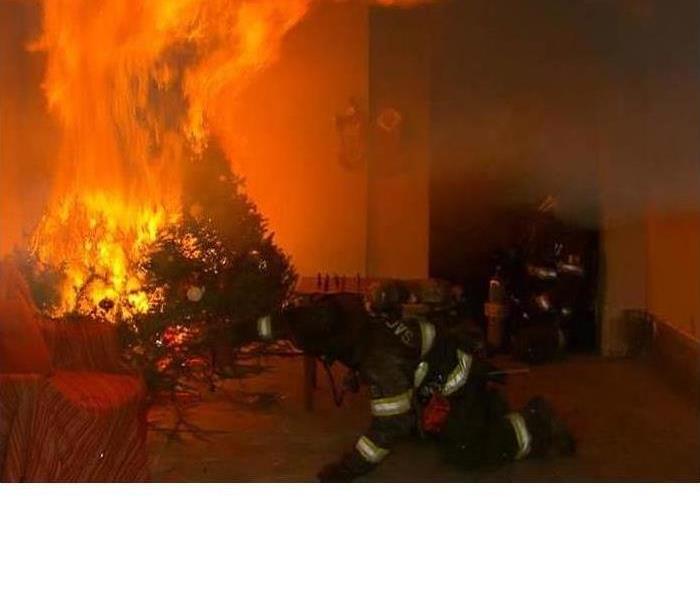Christmas Tree Fire Safety
11/30/2018 (Permalink)
No one wants to spoil the holiday season, but Christmas trees in the home can present a fire safety issue. A primary concern with a Christmas tree is fire danger, often brought on by the combination of electrical malfunctions and, in the case of a real tree, a drying tree.
In the United States, Christmas trees start approximately 210 house fires per year.
According to a National Fire Protection Association (NFPA) report issued in 2015, U.S. fire departments responded to more than 200 home structure fires annually between 2009 and 2013 in which Christmas trees were the first item to catch on fire. Each year, fires occurring during the holiday season injure 2,600 individuals and cause over $930 million in damage, according to the United States Fire Administration. Sadly, Christmas tree-related fires have a higher incident of fatalities than typical house fires, according to the NFPA report.
Electrical malfunctions are often to blame for Christmas tree fires.
Electrical failures or malfunctions were involved in nearly half of the fires, igniting the tree with sparks or small electrical fires. Decorative lights with live voltage were involved in more than 20 percent of the instances. However, putting trees too close to open fires or heaters caused a significant number of fires as well: nearly a quarter occurred because a heat source was located too close to the tree.
It isn’t just real trees that are a problem. Electrical malfunctions can also ignite plastic artificial trees, and homeowners should take the same precautions in terms of tree placement and decorations as they would with a real tree.
Be careful with how you discard your tree.
You should take care with trees that are left outside as well. The NFPA report revealed that an annual average of 90 outside and other non-structure fires on residential properties occurred because of Christmas trees stored on the property, the report indicates. Two-thirds of these fires occurred in January, with 64 percent of them being set intentionally. This suggests that discarded Christmas trees may be an attractive target for arsonists.
But, arson concerns are not an excuse to leave your tree up after the holidays. According to the NFPA, even a well-watered tree should be taken down within four weeks of being brought into the home. If you decorated your real tree right after Thanksgiving, it should be discarded the week after Christmas, not New Year’s Day. This is because by the end of the holiday season, Christmas trees are extremely dry, and present a heightened fire hazard.
ACTA (The American Christmas Tree Association): http://www.christmastreeassociation.org/christmas-trees-and-fire-safety/
Picture taken from Today.com






 24/7 Emergency Service
24/7 Emergency Service
